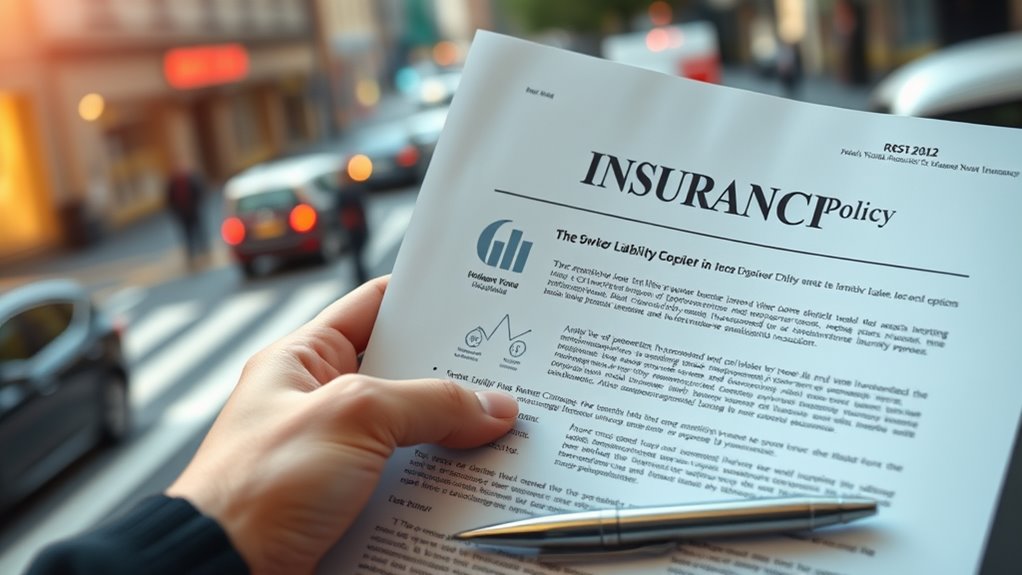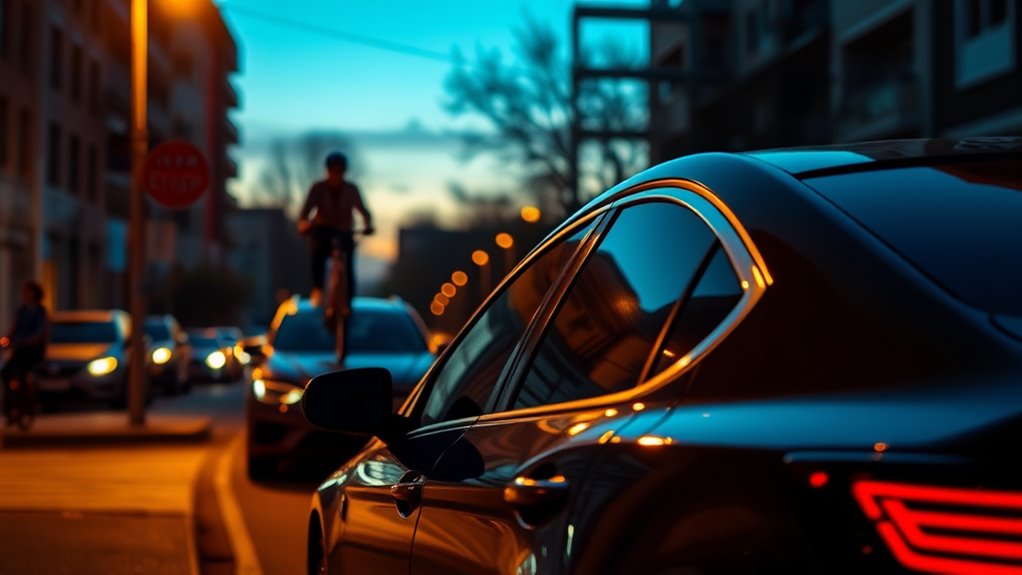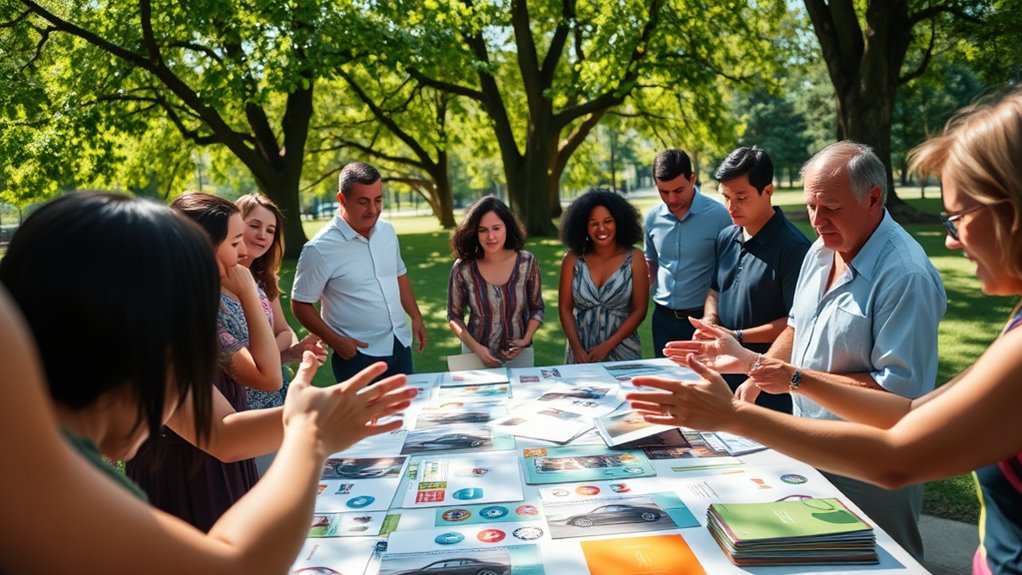Did you know that nearly 13% of drivers in the U.S. are uninsured? This statistic underscores the importance of having robust non-owner insurance coverage. When you're not the primary owner of a vehicle, choosing the right coverage options can be complex. From liability coverage to protecting yourself against uninsured drivers, understanding your choices is vital. Let's explore the ten best coverage options that can safeguard you on the road.
Key Takeaways
- Non-owner insurance provides essential liability coverage for borrowed or rented vehicles, ensuring protection against accidents involving other parties' cars.
- Bodily Injury Liability (BIL) coverage limits are crucial; selecting higher limits mitigates financial risks in accidents.
- Uninsured/Underinsured Motorist Protection is vital, covering costs from accidents involving drivers without adequate insurance, safeguarding against significant financial losses.
- Exclusions in non-owner policies include damages to the non-owned vehicle and collision damages, highlighting the importance of understanding these limitations.
- Monthly premiums average around $45, but comparing rates and available discounts is essential for finding the best coverage options.
Liability Coverage Options

When considering liability coverage options for non-owner insurance, you might wonder how they differ from traditional policies.
Non-owner liability coverage primarily protects you in case of accidents involving another party's vehicle, focusing on property damage and injuries to others when you're at fault. Unlike traditional policies, it doesn't cover the vehicle you're driving or your own injuries unless you add optional coverages like personal injury protection. Non-owner car insurance helps meet state minimum insurance requirements for liability, ensuring you're compliant while borrowing or renting a vehicle. Additionally, this type of insurance typically provides essential protection against financial liabilities that may arise from an accident.
Premiums are often lower, making this a cost-effective choice for those who don't own a car. However, it serves as a backup to a primary vehicle owner's insurance, ensuring you're covered when borrowing or renting a vehicle.
Understanding these distinctions is essential for selecting the best coverage for your needs.
Bodily Injury Liability Limits
Understanding Bodily Injury Liability (BIL) limits is essential for anyone relying on non-owner insurance, as these limits determine your financial responsibility in the event of an accident.
BIL is typically required to cover damages when you drive a borrowed or rented vehicle. These limits are expressed as two numbers, indicating the maximum payout per person and per accident.
BIL covers damages when driving borrowed or rented vehicles, with limits shown as maximum payouts per person and per accident.
Many states have minimum requirements, but these may not provide adequate protection. Choosing higher limits can mitigate significant financial risks, especially in accidents involving multiple injuries.
Utilizing insurance calculators can help you assess appropriate coverage based on your personal circumstances.
Ultimately, maintaining adequate BIL coverage is vital for your financial security while driving.
Property Damage Liability Coverage
Property damage liability coverage is vital for non-owner drivers, as it protects you from financial responsibility for damages caused to someone else's property in an accident.
This coverage pays for repairs to vehicles, buildings, and other structures affected during the incident. It's particularly important for those who frequently borrow or rent cars, as it meets minimum state insurance requirements.
Keep in mind that while it helps manage your financial responsibilities, it typically doesn't cover damage to the vehicle you're driving.
Premiums depend on factors such as your age, driving history, and location. By maintaining this coverage, you guarantee continuous insurance protection and avoid gaps in your insurance history, making it a smart choice for non-owner drivers.
Uninsured/Underinsured Motorist Protection

While traversing the roads, you might encounter drivers who either lack insurance or don't carry enough coverage to handle accidents. This is where uninsured/underinsured motorist protection comes into play. It safeguards you against financial losses when involved in accidents with such drivers.
Typically, this coverage combines both uninsured and underinsured protections, covering bodily injury and property damage for you and your passengers. It's particularly essential, as about one in eight U.S. drivers are uninsured, and the right policy can cover medical bills and vehicle repairs that would otherwise go uncompensated.
Some states even require this coverage, making it important to evaluate it when selecting your non-owner insurance policy for thorough protection on the road.
Minimum Policy Limits Requirements
Maneuvering the landscape of minimum policy limits requirements is vital for anyone considering non-owner insurance. Each state has unique mandates, often requiring liability coverage that includes bodily injury and property damage liability.
For instance, you might find a typical minimum of $10,000 for bodily injury per person, with $20,000 per accident, alongside property damage limits usually set at $10,000. In no-fault states like Florida, personal injury protection (PIP) is also required, generally capped at $10,000.
It's important to understand these varying limits to guarantee compliance and avoid legal penalties. Additionally, you can choose to purchase higher coverage limits for added protection, which can help safeguard your financial interests in case of an accident.
Exclusions in Non-Owner Policies
Understanding the exclusions in non-owner insurance policies is crucial for anyone considering this type of coverage. While these policies offer valuable protection, they come with specific limitations you should know about:
- No coverage for extensive or collision damages, including theft or repairs from an accident.
- No rental reimbursement, meaning you won't get help with rental costs if your primary vehicle is unavailable.
- Towing costs aren't covered, so plan accordingly.
- Damage to the non-owned vehicle isn't included, whether borrowed or rented.
These exclusions highlight the importance of evaluating your driving habits and insurance needs before opting for non-owner coverage. Being aware of these limitations can help you make an informed decision.
Additional Coverage Options

When considering additional coverage options for non-owner insurance, it's important to recognize how these enhancements can greatly improve your financial protection on the road.
Liability coverage safeguards you from legal claims due to bodily injury or property damage. Uninsured and underinsured motorist coverage protects you if an at-fault driver lacks adequate insurance.
Medical payments coverage and Personal Injury Protection (PIP) handle medical expenses for you and passengers, regardless of fault. Rental car liability coverage extends protection to vehicles you rent.
While these options boost your financial security, be mindful of increased premiums and state regulations. Evaluate your driving habits and risk profile to customize your coverage, ensuring peace of mind when driving without full insurance.
State-Specific Coverage Variations
Because non-owner insurance policies are subject to significant state-specific variations, it's vital to familiarize yourself with the legal requirements in your area.
Here's what you need to know:
- Not every state offers non-owner insurance, so check availability.
- Liability coverage is standard, but additional options like uninsured motorist protection vary by state.
- Minimum liability limits differ; some states enforce stricter regulations.
- Continuous coverage may be mandated, making non-owner insurance imperative to avoid gaps.
Understanding these factors helps you navigate your options effectively.
Navigating your options effectively requires a solid understanding of the key factors involved.
Always consult local regulations to confirm compliance and find the best coverage tailored to your needs. This way, you can make informed decisions about your non-owner insurance policy.
Premium Costs Comparisons
Steering through the landscape of non-owner insurance premiums can be challenging, especially with the significant variations across states and providers.
On average, you can expect to pay around $325 a year or about $27 monthly. However, in Florida, rates jump to approximately $545 annually or $45 monthly.
Different insurers also offer varying rates; for instance, USAA provides much lower premiums than Progressive. Your premiums can fluctuate based on your driving history and the level of liability coverage you select.
Additionally, geographic location plays an important role, with areas like Miami facing higher rates due to local conditions. As a result, it's vital to compare both state-specific rates and insurer offerings to find the best deal for your needs.
Discounts and Savings Opportunities
Many drivers may not realize that there are several discounts and savings opportunities available for non-owner insurance policies. Taking advantage of these can greatly lower your premiums.
Many drivers overlook discounts for non-owner insurance, which can significantly reduce their premiums.
Here are some common ways to save:
- Clean Driving Record: Maintain a safe driving history to qualify for discounts.
- Bundling Policies: Combine your non-owner insurance with renters or other policies for better rates.
- Digital Communication: Opt for paperless options to access additional discounts from some insurers.
- Frequent Car Borrowing: If you regularly borrow or rent cars, you might be eligible for reduced rates.
Always compare rates among providers, as discounts can vary widely by state and company, ensuring you get the best deal.
Conclusion
In summary, choosing the right non-owner insurance coverage is essential for your protection on the road. Did you know that nearly 1 in 8 drivers are uninsured? This startling statistic highlights the importance of Uninsured/Underinsured Motorist Protection. By prioritizing liability coverage and exploring additional options, you can guarantee you're well-prepared for unexpected situations. Take the time to compare premiums and discounts to find a policy that suits your needs and keeps you safe.
